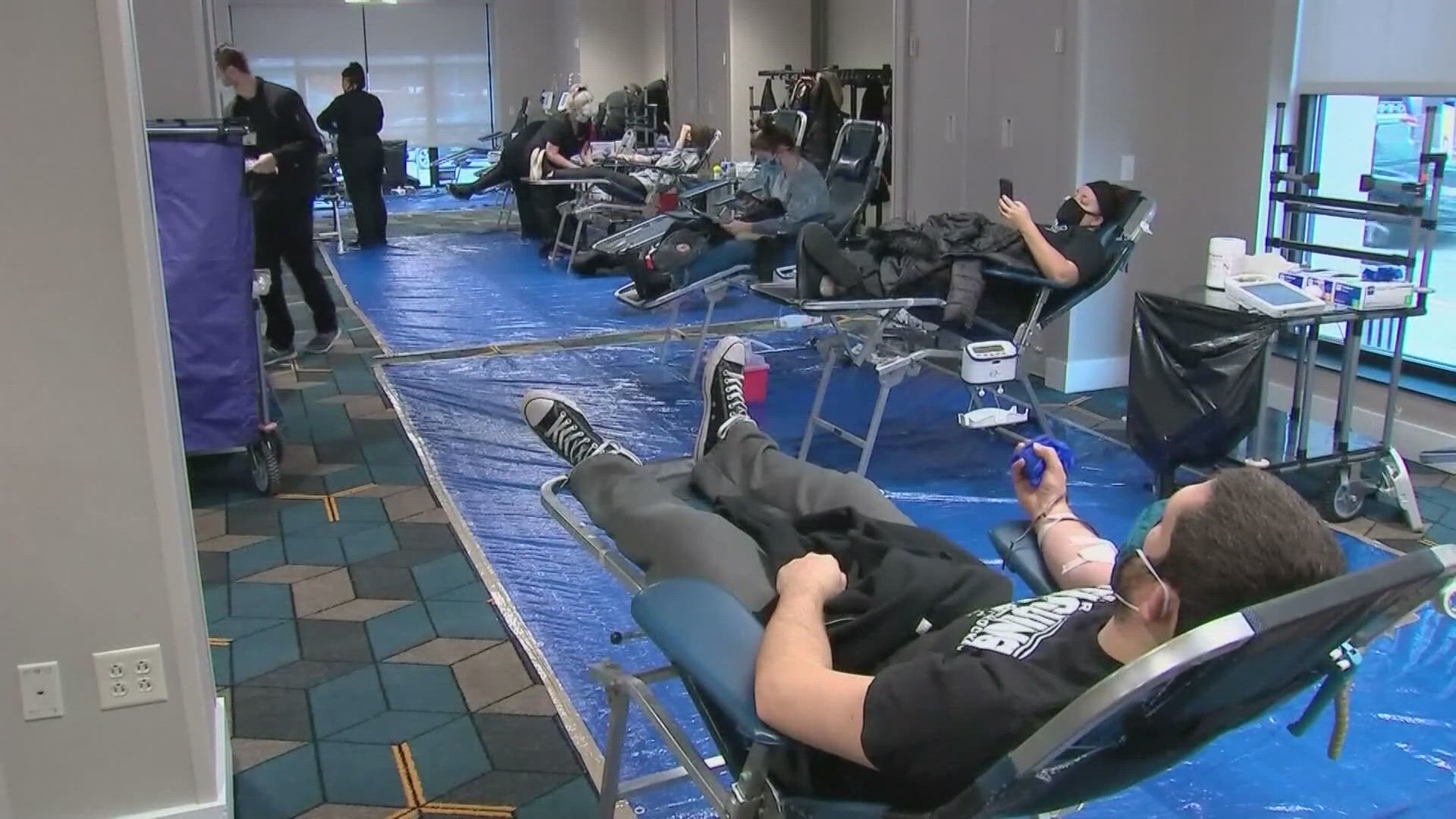CLEVELAND — The American Red Cross needs your help. There's an emergency blood shortage across the country and the donor numbers are the lowest they've been in 20 years.
On Thursday, at the American Red Cross donor center on Euclid Avenue in Cleveland, volunteers and workers were busy. But that's a great thing – it means more lives being saved.
Cleveland's blood donations are stable at the moment, but that's not the case in other parts of the country, especially because of bad weather forcing the cancellations of 375 blood drives across the U.S. That means, 11,000 blood and platelet donations went uncollected.
"So what we're asking people to do is to make a donation when it's safe to do so," said Jim McIntyre, regional director of communications of the American Red Cross of Northern Ohio.
Currently, hospitals are not experiencing a blood shortage, but they do want do stay on track. Cleveland Clinic ER physician, Dr. Sean Roth, says the need is still great.
"So although there's no hospital shortages that have been at the stage of the game, we want to make sure that we continue to have enough blood donors to make sure that we would never have something like that happen, and all blood is available to all patients in need," Roth said.
The donations are especially crucial for cancer patients, those with sickle cell anemia or people who need transfusions on a regular basis. Dan Florjancic has been giving platelets for the last few years. Because of its short shelf life, about five days, he knows the urgency.
"It feels like it goes a long way and helps more people, and not a lot of people do it. They don't have the time and I have the time ... so why not?" Florjancic said.
Signing up is easy to do. You can either go to redcross.org, or download the American Red Cross app, hit "schedule appointment," then select the time and location you want. They'll never turn you down if you walk in, but you may have to wait. So, it's encouraged to make that appointment.
When you get to your local donor center, or blood drive, the whole process takes less than an hour.
Safeyyah Edwards has been a phlebotomist for about 23 years. She knows giving blood can be scary, but she's here to make you feel safe.
"I love my donors, and I say 'my donors,' and that's how we refer to all of them. 'Cause once they come in here and we build that relationship with them, they become ours. They become family," Edwards said.
Right now, all blood types are needed, but most especially: Type O and platelets.

